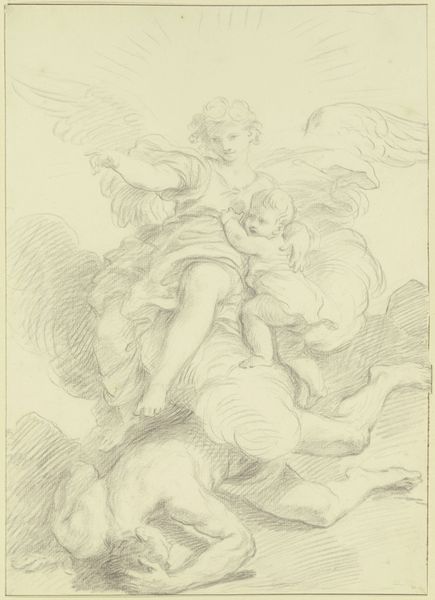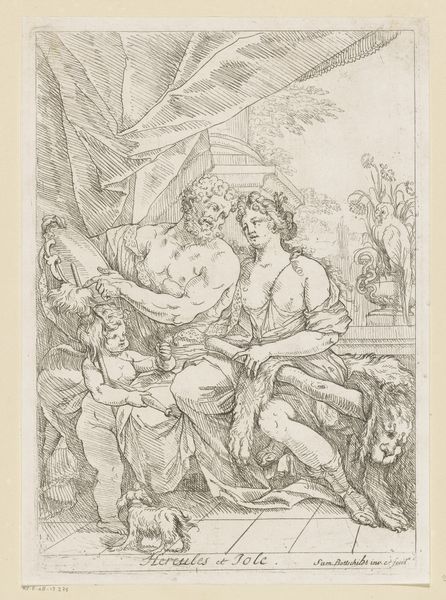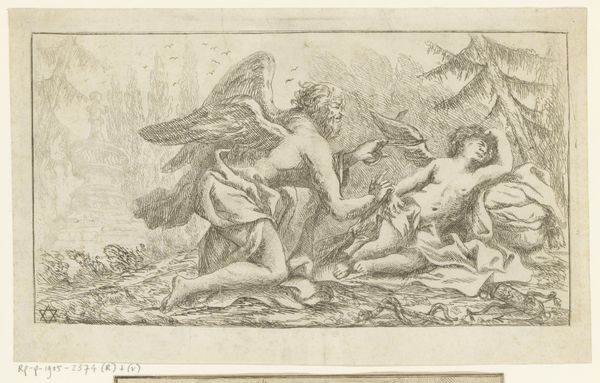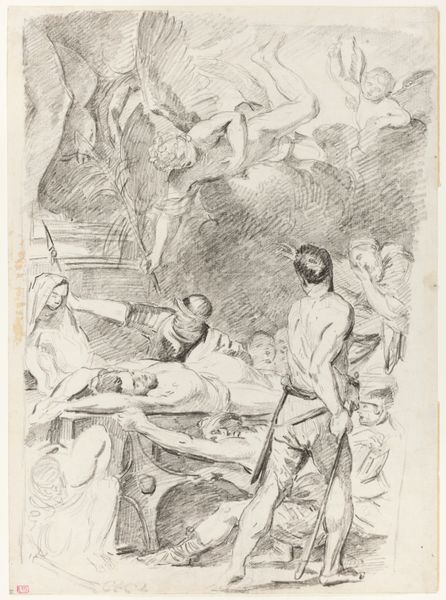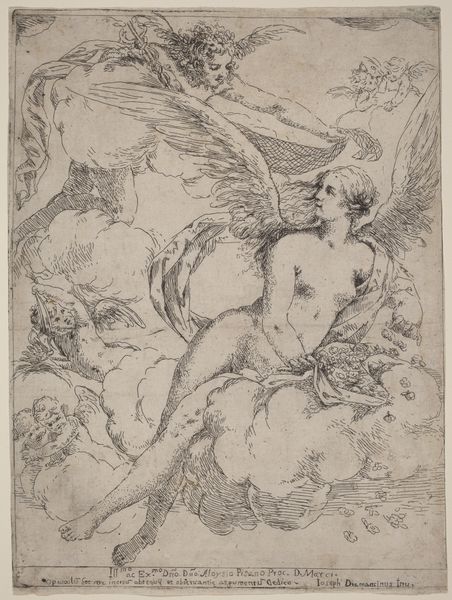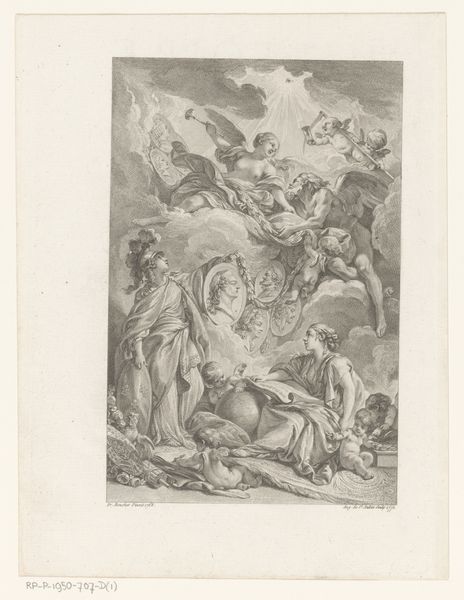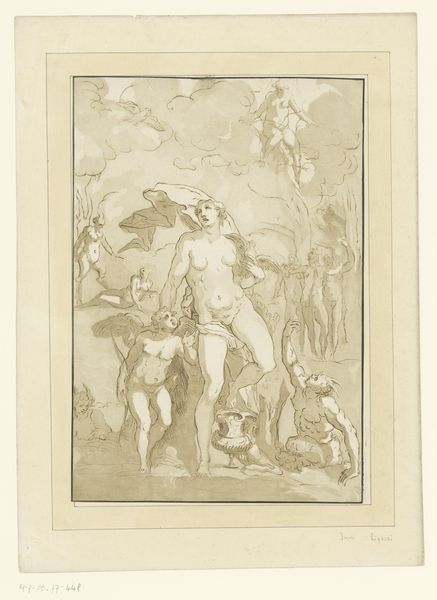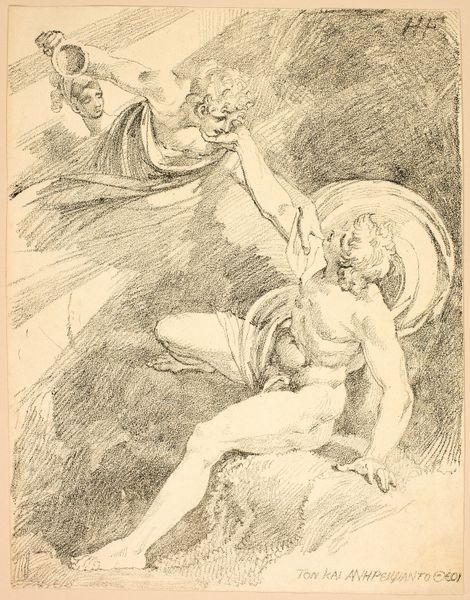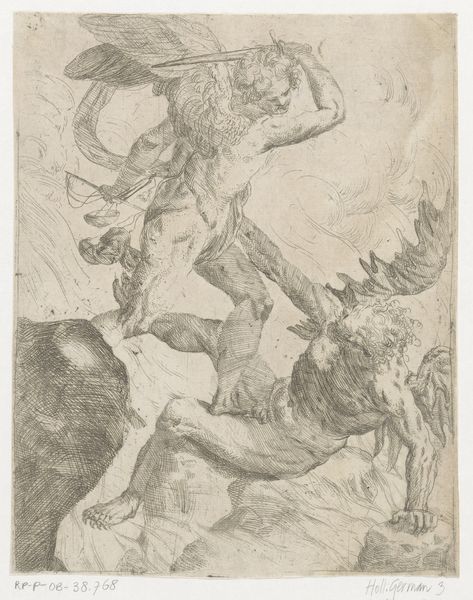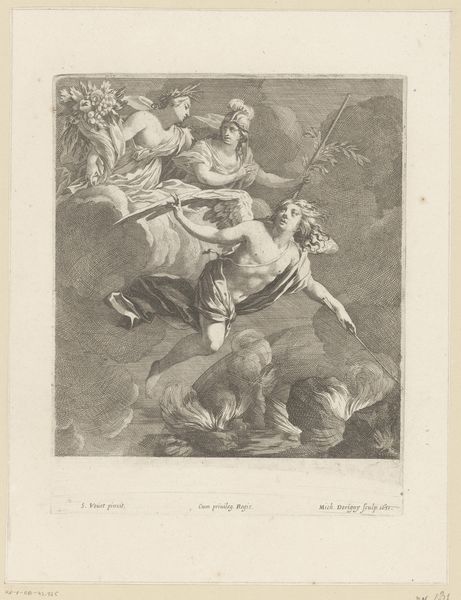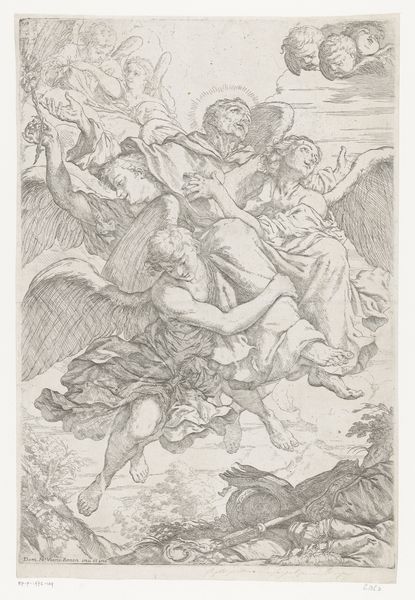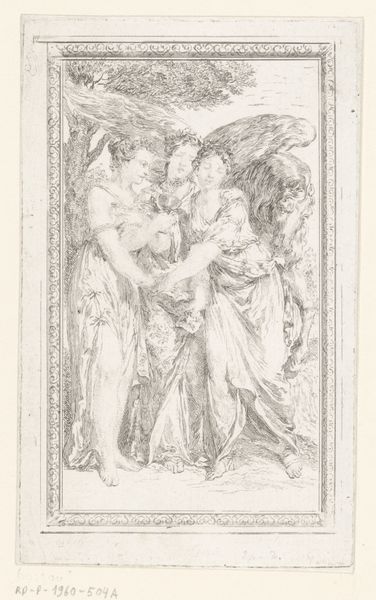
drawing, paper, ink, engraving
#
portrait
#
drawing
#
figuration
#
paper
#
11_renaissance
#
ink
#
cupid
#
history-painting
#
engraving
Copyright: Public Domain
Curator: At first glance, this feels… dreamlike. The figures almost seem to float on the page. Editor: Indeed. We are observing “Venus and Cupid,” a drawing rendered in ink on paper dating back to the period 1590-1600. The artist, Anton Eisenhoit, masterfully employs engraving techniques to bring forth this Renaissance vision. Curator: The composition is quite intriguing. Venus is prominently placed, attended by Cupid, naturally. And then there's that Pegasus rearing up behind them... The linework creates an ethereal quality, doesn't it? Notice how the light catches the figures and highlights them within the piece, enhancing their shapes? Editor: Placing this work within its historical context, engravings like this played a crucial role in disseminating classical mythology during the Renaissance. The revival of interest in Greco-Roman culture directly informed patronage. Disseminating mythological and historical narratives were, as a matter of politics, essential! How else could people claim and perform power without recourse to precedent? Curator: Absolutely! But observe how Eisenhoit utilizes delicate lines to contour the bodies, imbuing the scene with a sensuous, albeit chaste, tone. Editor: A certain standardization of idealized beauty certainly occurs during that period. But consider too how access to these images was restricted. Ownership and display cemented your place within that economy of looking. Curator: Certainly, you're not wrong to identify a hegemonic gaze. But even from the distance of centuries, this print is undeniably striking. The contrasts, light and dark, direct the viewer’s eye and elicit an immediate and sustained impact on perception. Editor: An impact informed by layers of historical meaning. What is clear from analyzing this work, both formally and historically, is that visual culture preserves power dynamics across vast reaches of time. Curator: Ultimately, isn't that the enduring power of great art: that its ability to reveal deeper, less obvious truths resides in visual language. Editor: Well said! Whether focusing on aesthetics or historical contexts, hopefully visitors appreciate that both approaches deepen our experience of the art and the culture surrounding its production.
Comments
No comments
Be the first to comment and join the conversation on the ultimate creative platform.
